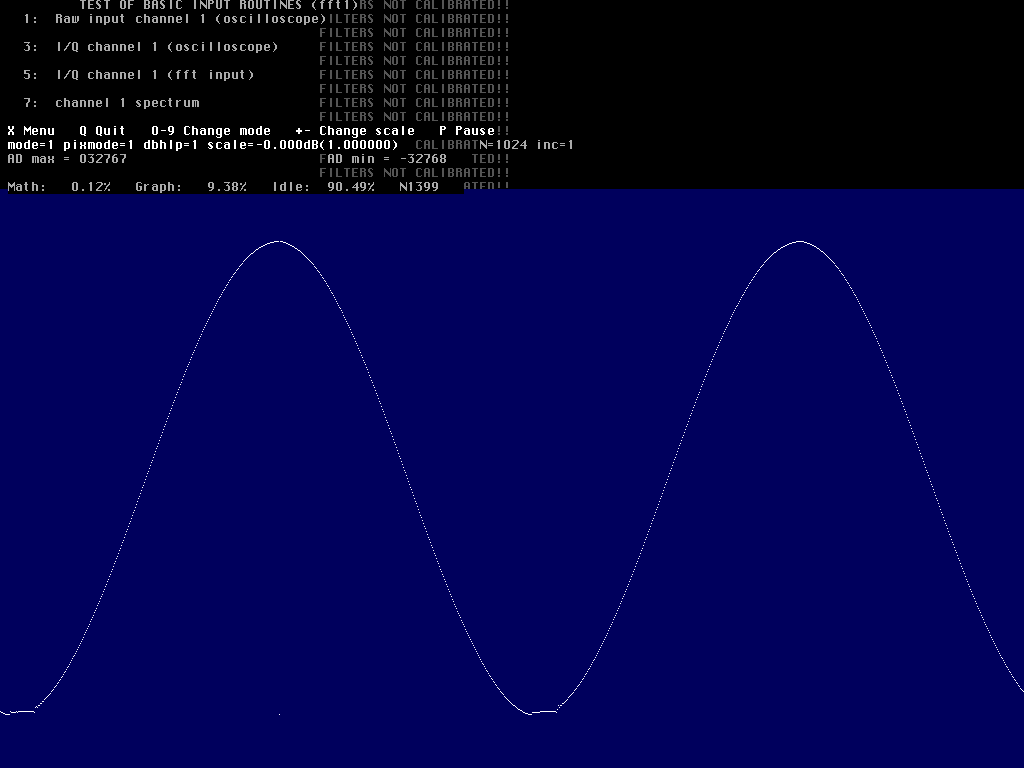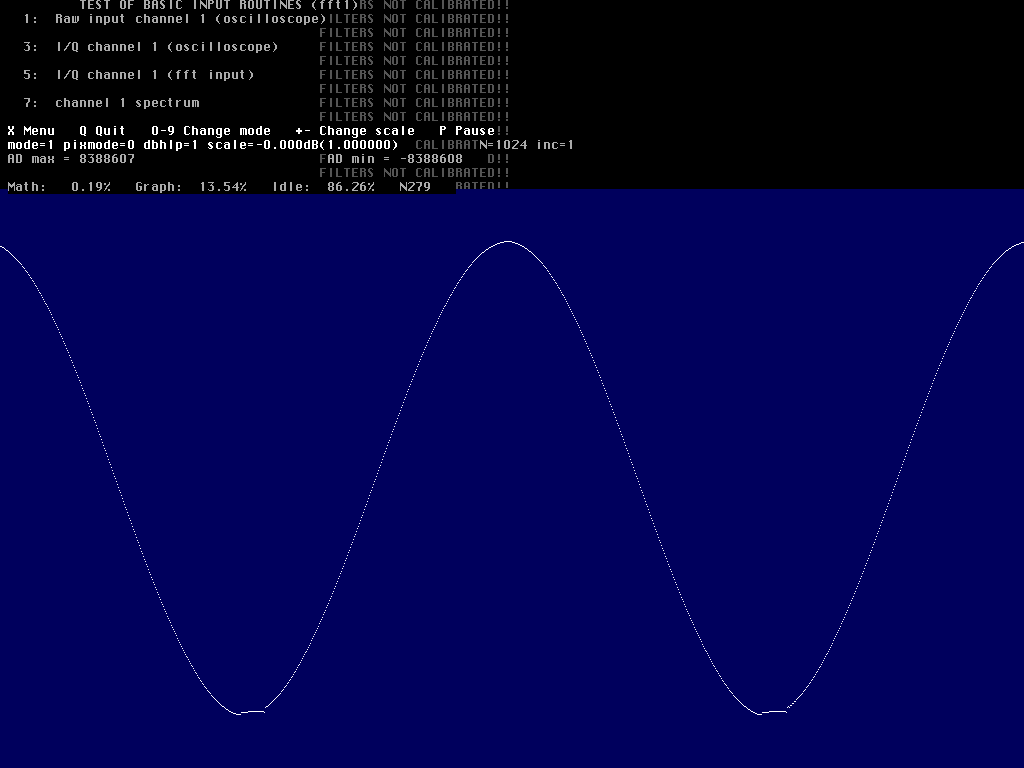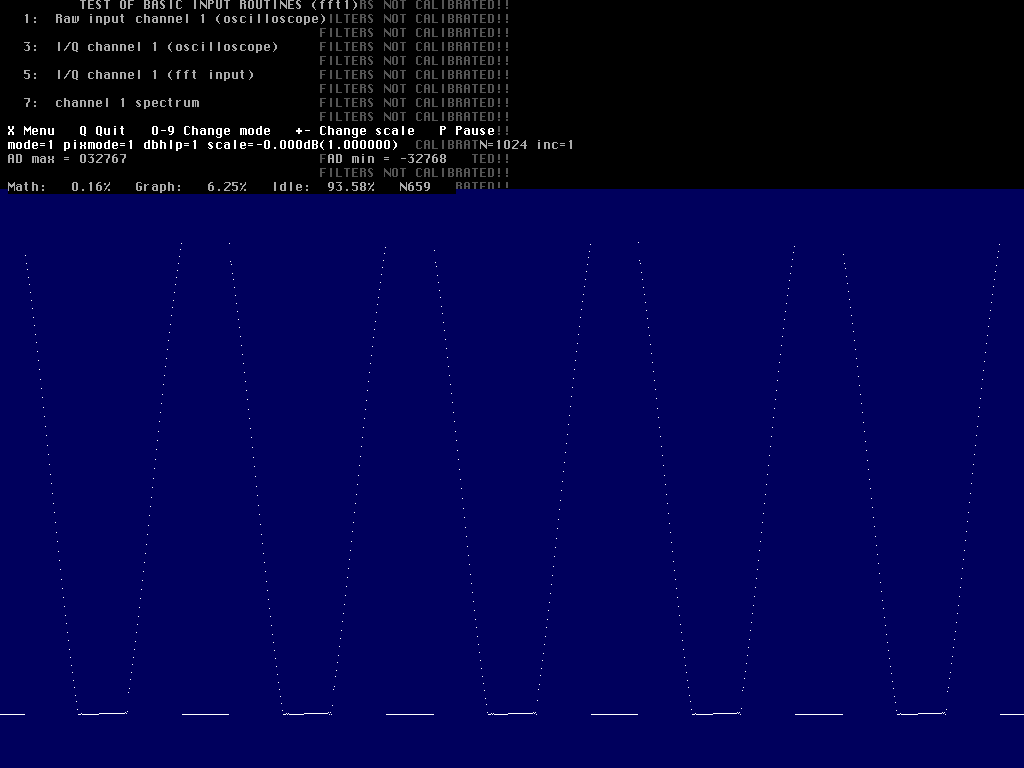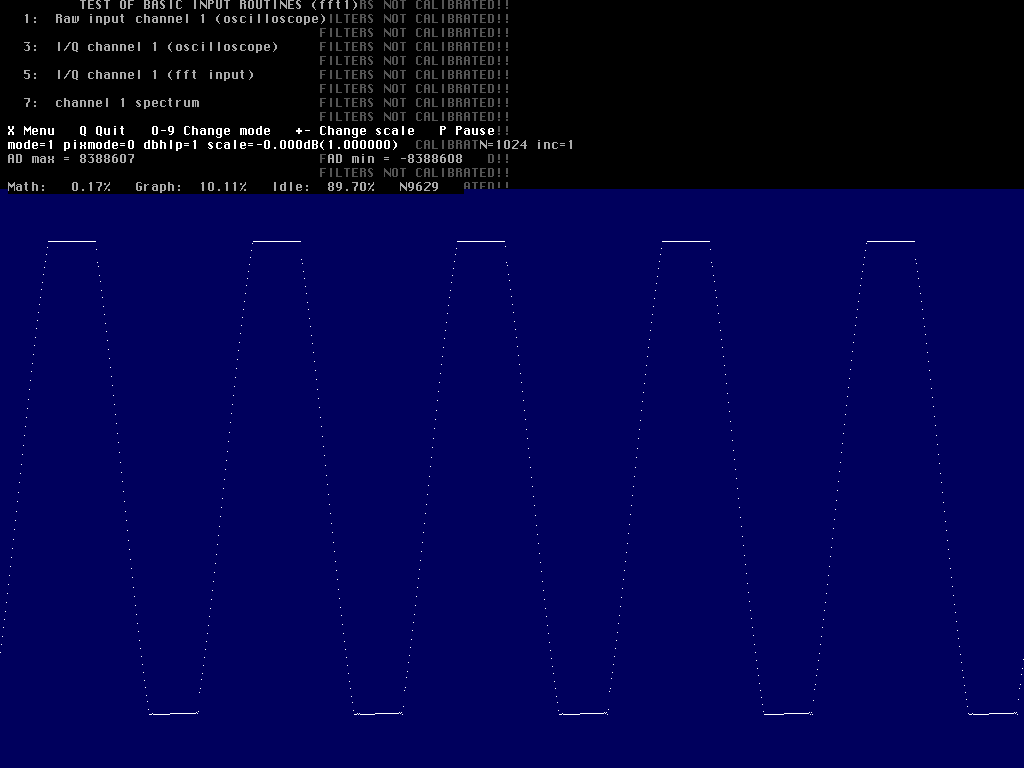Check saturationA 16 bit A/D converter has a range -32786 to +32767 while a 24 bit converter has a range -8388608 to +8388607. It is a good idea to verify that the analog hardware does not saturate before the A/D converter, and it is a good idea to make sure there is at least a small margin by making the test with a voltage divider at the A/D input that reduces the voltages by 10% (or whatever margin you decide you want to be sure you have).Use the function F=HARDWARE TEST MODE on the main menu and connect a signal generator to the antenna input. The computer works as an oscilliscope. Press P to freeze the image, +/- to change the scale if you want to inspect the noise floor without any signal. Like most screens, press G for a .GIF file. Make sure you get the correct maximum and minimum values AD max and AD min for the number of bits in use.
Test applied to the Delta44 boardFig. 1. shows my Delta44 set for 16 bit data. The signal level is set precisely for full range. The signal does not actually come from my receiver, it comes from a good quality tone generator. The non-linearity seen at negative voltages originates in the Delta44 board. This phenomenon is most pronounced when the frequency is around 180Hz. |

|
Figure 2 shows the same signal as fig. 1 but this time in 24 bit mode. Actually 32 bits are read each time but the lower 8 bits contain no information so they are discarded. The figure does not look different compared to fig 1. The saturation levels are 256 times larger but the scale is changed accordingly.
|

|
Figures 3 and 4 show a signal that saturates the Delta44 in both
directions.
In 16 bit mode there is some error, see fig.3.
The largest value, +32767 is present but when the input signal
goes even higher the value does not stay saturated at 32767, it
jumps to -32768 which is really disturbing and causes disastrous
interference if it ever happens in a radio application.
In 32 bit mode saturation is ok in the positive direction. The internal amplifier can not keep the A/D converter completely saturated in the negative direction. Something that is equally well visible in figs 3 and 4. That is the same phenomenon as illustrated in figs 1 and 2. The internal saturation at low frequencies is not any problem. If a signal is strong enough saturation may occur something like 2% too early which is a loss of 0.1dB in dynamic range and nothing to worry about.
|


|
|